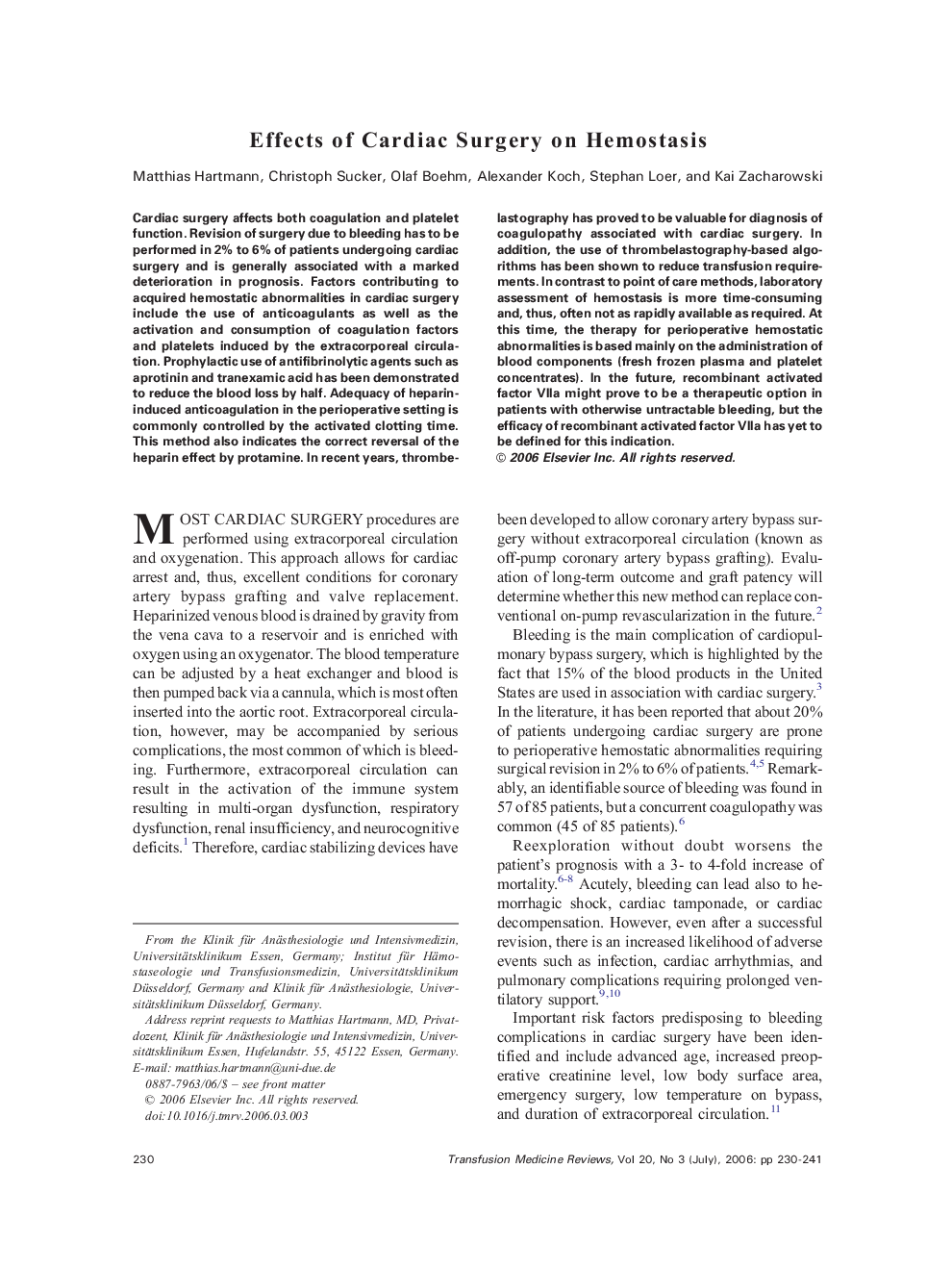| Article ID | Journal | Published Year | Pages | File Type |
|---|---|---|---|---|
| 3337026 | Transfusion Medicine Reviews | 2006 | 12 Pages |
Cardiac surgery affects both coagulation and platelet function. Revision of surgery due to bleeding has to be performed in 2% to 6% of patients undergoing cardiac surgery and is generally associated with a marked deterioration in prognosis. Factors contributing to acquired hemostatic abnormalities in cardiac surgery include the use of anticoagulants as well as the activation and consumption of coagulation factors and platelets induced by the extracorporeal circulation. Prophylactic use of antifibrinolytic agents such as aprotinin and tranexamic acid has been demonstrated to reduce the blood loss by half. Adequacy of heparin-induced anticoagulation in the perioperative setting is commonly controlled by the activated clotting time. This method also indicates the correct reversal of the heparin effect by protamine. In recent years, thrombelastography has proved to be valuable for diagnosis of coagulopathy associated with cardiac surgery. In addition, the use of thrombelastography-based algorithms has been shown to reduce transfusion requirements. In contrast to point of care methods, laboratory assessment of hemostasis is more time-consuming and, thus, often not as rapidly available as required. At this time, the therapy for perioperative hemostatic abnormalities is based mainly on the administration of blood components (fresh frozen plasma and platelet concentrates). In the future, recombinant activated factor VIIa might prove to be a therapeutic option in patients with otherwise untractable bleeding, but the efficacy of recombinant activated factor VIIa has yet to be defined for this indication.
